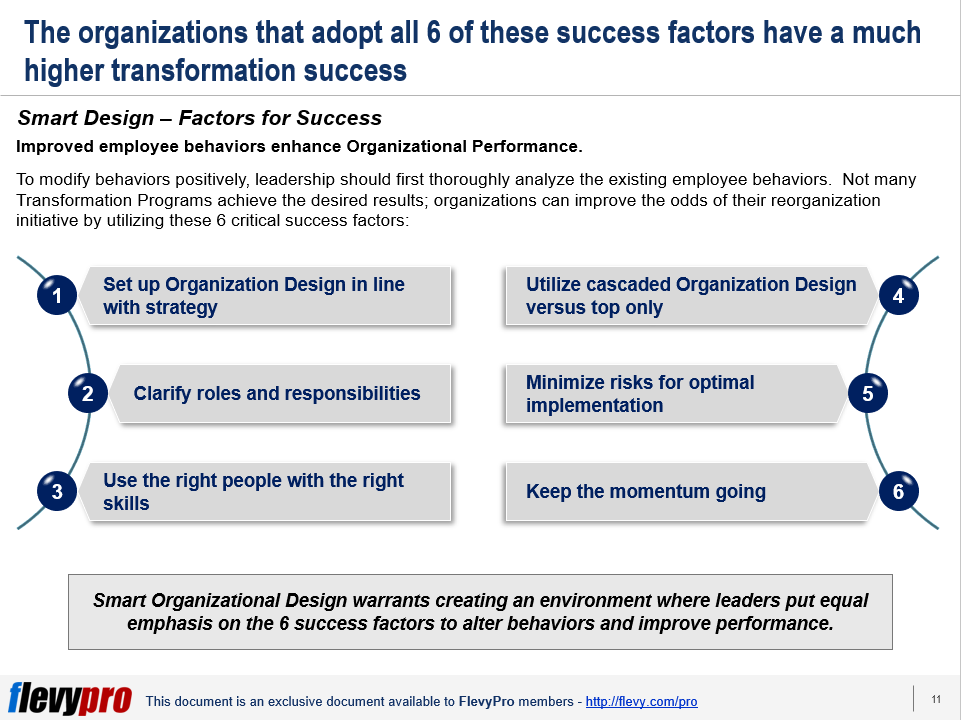Business environment has transformed drastically from what it was a century ago. It has become immensely challenging due to competition, disruptive technologies, laws, and globalization. These challenges warrant better performance to address customer needs and to survive—and outpace—intense competition. Consequently, organizations have become complex.
The work that individuals perform in an organization has also shifted from manual labor and clerical jobs to knowledge-based experiential tasks. Traditional workforce was required to adhere to commands and stick to routines, whereas today’s workforce needs to be more empowered, innovative, able to adapt to varying circumstances, and render sound judgment.
Adapting with the constantly changing business environment is essential for organizations aspiring to succeed in today’s competitive markets. In order to stay competitive, more and more organizations across the globe are undertaking Business Transformation programs to reorganize their businesses. However, a large percentage of such programs fail to achieve the desired outcomes.
For the Organizational Design to be successful, leaders need to be mindful of the revolutionized work settings and business environment of this age. One of the major factors attributed to these failure rates is utilizing traditional approaches to reorganization, which are proving ineffective in this digital age. These traditional approaches appreciate “level of control” and power, and underestimate the significance of employee autonomy and innovation.
The Smart Design Approach to Organization Design
Today’s Knowledge Economy necessitates the employees to be more empowered to decide on their own than merely following commands. People act in ways that are best for their own interests. The new approach to reorganization—termed Smart Organizational Design—aligns the workforce’s best interests with the organizational mission rather than seeking control over the employees. The focus is on changing the environment (context) and mindsets of employees willingly and instilling team work and cooperation, thereby enhancing organizational performance considerably.
The Smart Organizational Design approach entails classifying the existing workforce behaviors, ascertaining the desired behaviors critical to improve performance, and providing environment (context) favorable to develop new behaviors. The approach encompasses 3 main steps:
- Define why reorganization is necessary (objective)
- Determine the behaviors critical to support reorganization
- How to execute the Smart Organizational Design
Let’s dig deeper into the second step.
Determine the behaviors critical to support reorganization
The next step involves the leadership to determine the “what” element of the Smart Organizational Design approach—i.e., definition of certain behaviors critical to achieve the transformation purpose. Determining the desired behaviors necessitates thinking through the following 4 critical Smart Organizational Design aspects. These 4 design aspects work in tandem to shift the environment (context) for the workforce and motivate them to embrace the new behaviors crucial for improved performance:
- The Organizational Structure aspect—pertains to management reporting lines, spans of control, and layers of hierarchy.
- The Roles and Responsibilities aspect interprets individual and shared accountabilities to cultivate teamwork and cooperation.
- The Individual Talent aspect specifies the right skill set and motivation to perform responsibilities of each role effectively.
- The Organizational Enablers aspect outlines the elements necessary for creating the right context (environment) for embracing the desired behaviors, i.e., decision processes, performance management, and talent management.
Interested in learning more about the other step of the Smart Organizational Design approach and the factors critical for its success? You can download an editable PowerPoint on Smart Organizational Design here on the Flevy documents marketplace.
Are you a Management Consultant?
You can download this and hundreds of other consulting frameworks and consulting training guides from the FlevyPro library.

Comments